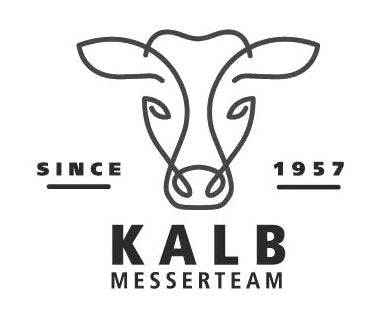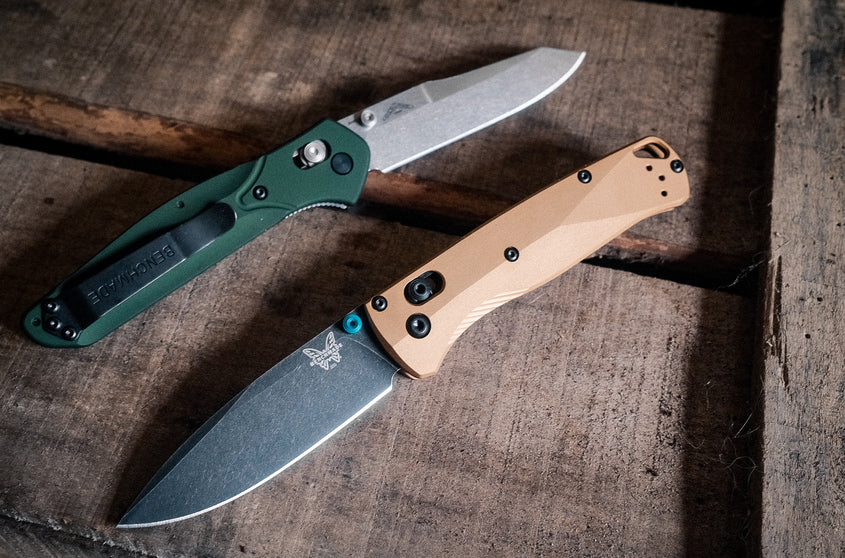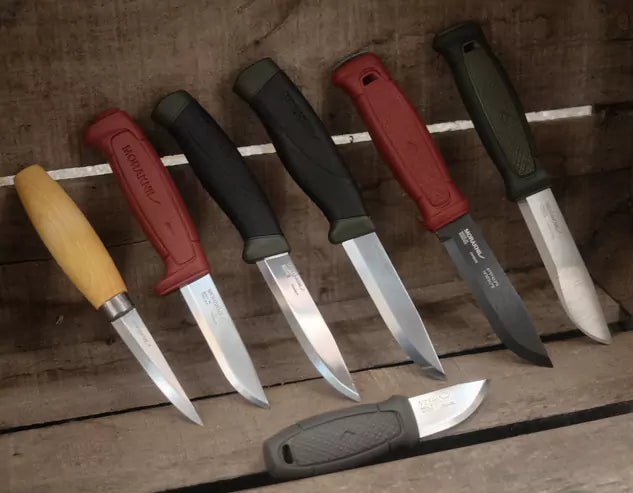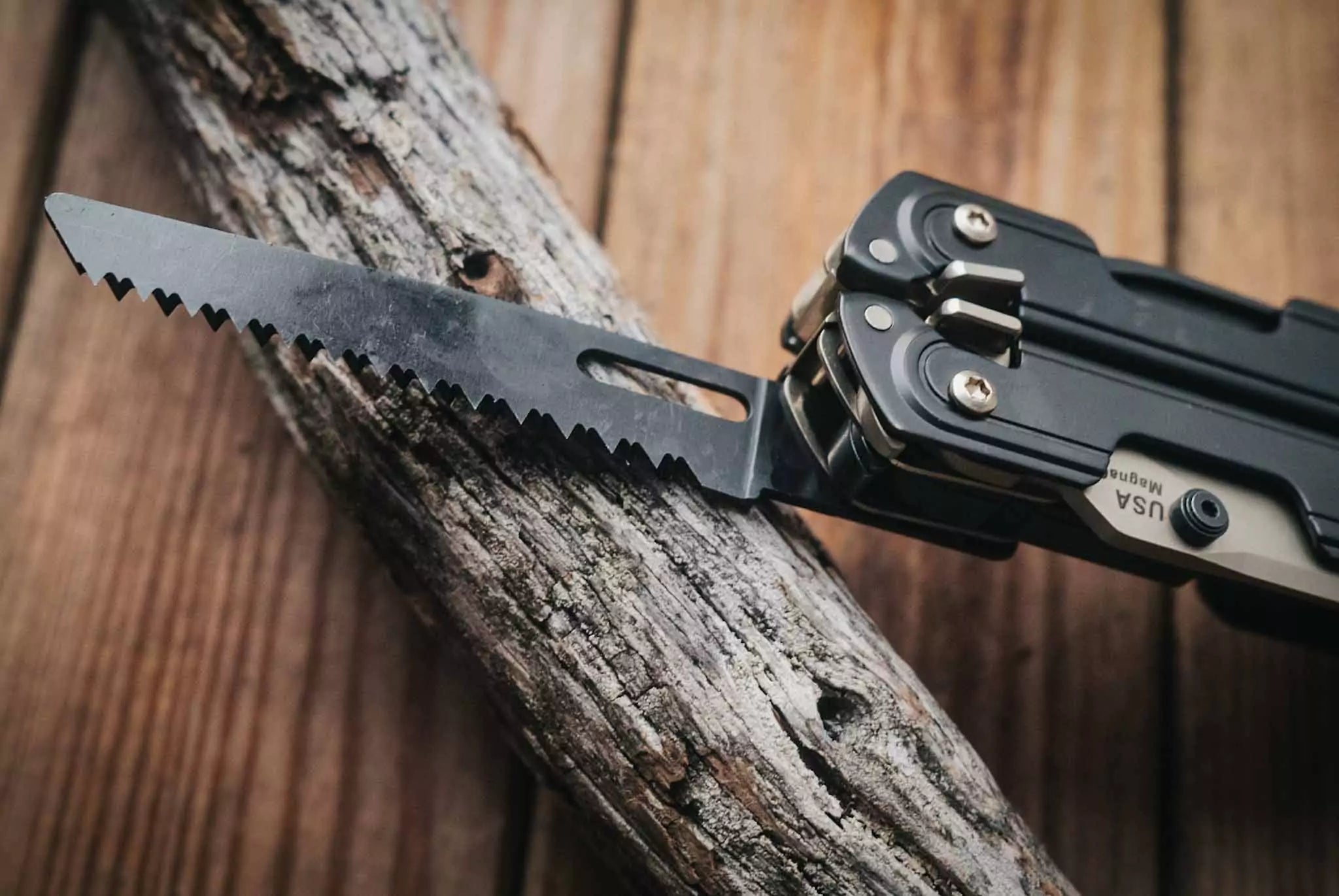What makes a good outdoor knife? A guide.
A reliable knife is essential equipment for every outdoor enthusiast. Whether hiking, camping, survival training or bushcraft – the right knife can make all the difference in comfort and sometimes even the success or failure of your outdoor adventure. But what exactly makes the best outdoor knife ? Which knife is suitable for which activity? And what should you look for when buying one?
In this comprehensive outdoor knife guide, we cover all the important aspects that make a high-quality outdoor knife – from the blade shape to the material and the proper care.
Content:
- Knife types: Which knife for which purpose?
- The agony of choice: blade steel
- Handle materials and their properties
- Blade shapes: What is suitable for what?
- Types of grinding and their areas of application
- All-rounders vs. specialists: Which knife for which job?
- Knife care in the field and on the go
- The path to the best outdoor knife: Buying advice
- Conclusion
1. Choosing the right knife: A knife for every purpose
Bushcraft knife
Bushcraft is about the skills that enable life and survival in nature. A good bushcraft knife should be robust, but also easy to handle, and suitable for more delicate woodworking.
Typical characteristics:
- Average blade length (approx. 9-12 cm)
- Fixed blade
- Robust handle material
- Mostly Scandi-grind for precise carving work.
- The demand for full-tang knives is high, but not always necessary.
Recommended models:
- Mora Bushcraft Black
- Böker DBK Bushfriend 2000
- BPS Knives B1 Bushcraft
In our guide "Which Bushcraft Knife Should I Buy?", you'll find detailed tips on choosing the right Bushcraft knife for you.
Survival knife
Survival knives are designed for emergency situations and must be extremely reliable. They are usually characterized by a robust construction with a thick blade spine and sturdy plastic handles.
Typical characteristics:
- Longer blade (often 12-18 cm)
- Very robust construction
- Often with additional features (fire starter, saw back)
- Drop-point or clip-point blade shape
- Often with a concave grind for versatile use.
Recommended models:
- Mora Garberg
- Böker Naturensöhne MK. I – 7 vs. Wild Knife
- Heckler & Koch HK MP7 Personal Duty Knife
See also our guide "Survival Knife: Your Lifesaver in Extreme Situations". There you will find detailed tips on choosing the right bushcraft knife.
Trekking and hiking knives
For hikers and trekkers, low weight and versatility are paramount.
Typical characteristics:
- Medium to small blade length
- Often designed as a folding knife.
- Lightweight materials
- Simple, versatile blade shape
Recommended models:
- Victorinox Swiss Army Knife
- Opinel
- Victorinox Venture
Hunting and fishing knives
These special knives are optimized for processing game or fish.
Typical characteristics:
- For hunting knives: A robust blade with a good grip.
- For fillet knives: Long, flexible blade
- Handle material with good grip, even when wet.
Recommended models:
- Buck 112 Ranger (Hunting)
- Buck 117 Brahma Pro (Hunting)
- Buck 147 Hookset 9" Saltwater Fillet (Fishing)
2. Blade steels compared
Choosing the right steel is crucial for the performance of the best outdoor knife. Here are the most important types of steel and their properties:
Carbon steels
Advantages:
- Excellent sharpness
- Easy to sharpen
- Good edge retention
Disadvantages:
- Susceptible to corrosion
- Requires regular maintenance.
Examples: 1095, O1, C75. Ideal for bushcraft, where frequent sharpening is possible and precise cuts are needed.
Stainless steels
Advantages:
- Corrosion resistant
- Low maintenance
- Good for humid environments
Disadvantages:
- Depending on the steel, it can be a little more difficult to sharpen.
Examples: 440C, AUS-8, VG-10. Ideal for trekking, camping, hunting and fishing, where the knife may be exposed to moisture.
Premium steels
Advantages:
- Combine rust resistance with outstanding sharpness.
- Long-lasting sharpness
- Robust
Disadvantages:
- Significantly more expensive
- Sometimes more difficult to sharpen.
Examples: S30V, CPM-S35VN, M390, Elmax. Ideal for demanding outdoor activities where reliability is non-negotiable.
3. Handle Materials and Their Properties
The handle material determines the comfort and control over the knife. Here are the most important materials:
Wood
Advantages:
- Natural and aesthetically pleasing
- Pleasant to the touch
- Good grip in dry conditions.
Disadvantages:
- Can swell when wet.
- Requires maintenance (regular oiling)
- Less durable than synthetic materials if poorly cared for.
Ideal for bushcraft knives, traditional hunting knives.
Plastics (G10, Micarta, FRN)
Advantages:
- Extremely durable
- Weather-resistant
- Often good grip even in wet conditions.
- Easy
Disadvantages:
- Partly less traditional aesthetics
- May feel uncomfortable in extreme cold.
Ideal for survival knives, trekking knives, use in adverse conditions.
Rubber/Elastomer
Advantages:
- Excellent grip even in wet conditions.
- Shock-absorbing
- Comfortable to hold.
Disadvantages:
- Less durable
- Can become brittle over time.
- Attracts dust
Ideal for hunting and fishing knives, where a good grip in wet conditions is important.
4. Blade shapes for different applications
Drop Point
A robust, versatile blade shape with a rounded tip. Advantages:
- Extremely versatile
- Robust tip
- Good balance between cutting efficiency and durability.
Ideal for all-round outdoor knives, hunting knives.
Clip Point
Recognizable by the "truncated" upper blade edge. Advantages:
- Precise tip for fine work.
- Good puncture resistance
- Versatile in use.
Ideal for survival knives, versatile outdoor activities.
Tanto
With angled cutting edge and straight tip. Advantages:
- Extremely robust tip
- Good for cutting hard materials.
- Penetration capability
Ideal for survival and tactical applications.
Sheepsfoot/Wharncliffe
Straight cutting edge with a sloping top. Advantages:
- Safe (no sharp point)
- Precise cuts
- Full control when carving
Ideal for bushcraft, wood carving.
5. Types of grinding and their applications
The sharpness of the blade is a key factor in determining the cutting performance and handling of the best outdoor knife:
Flat grind (V-grind)
Advantages:
- Versatile
- Good balance between sharpness and robustness.
- Relatively easy to sharpen.
Ideal for all-purpose knives and hunting knives.
Scandi-cut
Advantages:
- Excellent for woodworking
- Very easy to sharpen (even in the field)
- Excellent cutting performance
Disadvantages:
- Less robust under lateral stress.
- Not ideal for hard materials.
Ideal for bushcraft and wood carving.
Hollow grinding
Advantages:
- Extremely sharp
- Low cutting resistance
- Good for precise cuts.
Disadvantages:
- More sensitive cutting edge
Ideal for hunting knives and fillet knives.
Convex grind (Balliger grind)
Advantages:
- Very robust
- Good edge retention
- Good for splitting wood.
Disadvantages:
- More difficult to sharpen
- Slightly higher cutting resistance
Ideal for survival knives and heavy work.
6. All-rounder vs. specialist: Which knife for which task?
All-purpose knife for versatile use.
Not everyone has the budget or need for various specialized knives. Here are some excellent all-rounders for outdoor use:
Mora Companion
- Excellent value for money (around €15-20)
- Good sharpness and edge retention.
- Scandi-grind for versatile applications
- Easy
- Areas of application: Camping, light bushcraft, general outdoor tasks
Victorinox Hiker
- Compact and lightweight
- Many useful additional tools
- Reliable and durable
- Stainless steel
- Areas of application: Hiking, trekking, everyday use, light outdoor tasks
Victorinox Venture
- Easy to handle and maneuver.
- Brutal slicer thanks to the finely ground flat grind.
- Thanks to the blade geometry, it can be used in a variety of ways: excellent for carving, unsurpassed in the outdoor kitchen.
- Areas of application: Camping, light bushcraft, general outdoor tasks
Special knives for special requirements
In some situations, a specialist is superior to a generalist:
Mora carving knife 106
- Specifically designed carving knife
- Laminated steel for high toughness and sharpness
- Ergonomic barell handle for extended use.
- Special knives for special requirements
Mora Peeling Knife/Spoon Knife 164
- Special carving knife for hollowing out wood surfaces.
- Perfect for carving spoons by the campfire.
- It still finds a place as a useful tool in any bushcraft backpack.
Otter sailor knife
- Traditional and time-tested design.
- High-quality Micarta handles for long-lasting durability.
- A nostalgic eye-catcher for traditionalists.
7. Knife Care in the Field and at Home
A good outdoor knife is an investment that can last for years with proper care. To ensure this, you should follow these care tips:
- Clean the blade after each use (especially important for carbon steel). For outdoor use in forests and meadows, wipe with clean water and a dry cloth; at home, clean with warm water and, if necessary, a mild detergent.
- Remove organic materials (blood, plant juices) immediately.
- Rinse thoroughly with fresh water after contact with salt water.
- Regularly clean the joints of folding knives from dirt and keep them lubricated with mineral oil (if the knife is used for food preparation, make sure the oil is food-grade!).
- Oil regularly (especially carbon steel)
- Ensure proper storage (dry, ideally lightly oiled)
- Check the screws on folding knives occasionally and tighten them if necessary.
- Maintain leather sheaths (e.g. with beeswax) to prevent moisture absorption.
Sharpen knives in the field.
It is generally recommended to always carry a (small) sharpening strap/leather strap in the field and countryside and to sharpen the knife regularly to maintain a constant basic sharpness. Especially if you carve a lot or cut with the knife on harder surfaces, it is recommended to briefly run the knife over the sharpening strap every 10-20 minutes (depending on the use of the knife) so that the cutting edge always stays nice and sharp.
Depending on the work involved, it can of course happen that the knife becomes duller faster than you'd like – or, in the worst case, even chipping occurs on the cutting edge. Only sharpening can help to restore the cutting edge or grind out the damage. For smaller chips, this works very well with small whetstones like the Work Sharp Guided Field Sharpener or the Victorinox Dual Knife Sharpener with a little practice and patience. If larger damage to the cutting edge appears, you should use a larger stone or sharpening system after returning to civilization. In such cases, it's always a blessing to have a backup knife like the CRKT Minimalist around your neck.
8. The path to the best outdoor knife: Buying advice
If you're facing the decision of which outdoor knife to buy, you should first think about its primary purpose. Prioritize the following:
- Define main area of use: Bushcraft, Survival, Trekking?
- Choosing blade material: Stainless steel or carbon steel? Do you work a lot in and around water or in areas with high humidity? Then choose rust-resistant steel. Do you want that little bit more in terms of easier sharpening (depending on the steel!) and do you like the patina of old-school vibes? Then choose carbon steel.
- Fixed blade or folding knife: Stability vs. mobility. Do you want to bash your knife through logs as if there were no tomorrow? Then opt for a stable, fixed-blade knife. Do you prefer to always have it with you and readily available in your pocket, but only want to use it to sharpen an occasional stick or peel an apple? Then you'll be happier with a pocket knife.
- Weight and size: Balancing functionality and portability.
Conclusion: The best outdoor knife is the one that's right for YOUR needs.
There isn't ONE best outdoor knife for all situations. The choice depends heavily on your individual needs, preferences, and intended use. This outdoor knife guide is designed to help you make an informed decision. Remember: The best knife is ultimately the one you have with you when you need it – and that you can handle competently and safely.
If you are particularly interested in Mora knives, we have created a separate Mora guide here.











Leave a comment
This site is protected by hCaptcha and the hCaptcha Privacy Policy and Terms of Service apply.